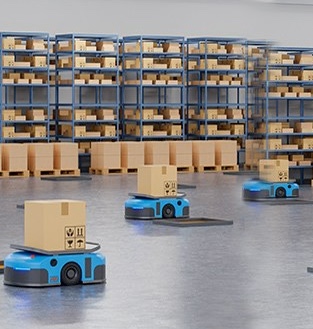There are increasingly more innovations arriving in the world of eMobility, and as confirmed by Delta Electronics to Mobility Portal Europe, this will go hand in hand with robotics.
But, is it possible that the future of electric vehicle (EV) charging is with robots?
“Yes, it is a possibility and in Dubai things are already being done like this to refuel gasoline cars,” says Michael Mayer-Rosa, Senior Director IABG EMEA, Industrial Automation Business Group at the company.
And he adds: “As it has been done to supply fuel, in the same way it can be done to recharge the EV.”
Furthermore, innovations are already being observed in the sector, with mobile devices that take care of searching for and reserving a parking space and “refilling” the EV while the driver carries out other activities.
However, at this point, the expert explains that this system needs to have access to the automobile and several users, depending on the country, are not willing to allow it.
“We have to see how the market reacts, and this is a big issue that needs to be resolved first before talking about these innovations,” he emphasizes.
In other words, it is essential to overcome prejudices and address safety problems before the technology is fully prepared.
“In the future, anything is possible, but it should be something done by robotics,” Mayer-Rosa insists.
“The direction should move towards an inductive charging system”
This is a second solution mentioned by the Senior Director, but the advantage of this is that it does away with cables.
This system is based on a magnetic field that automatically establishes a connection with the point when the car approaches.
While a special navigation system on the EV’s screen helps the driver quickly locate it in the right position and then the “refueling” starts automatically.

Delta already has a similar technology, currently focused on recharging batteries for industrial electric vehicles and Automated Guided Vehicles (AGVs).
In this case, sealed electronics and contactless energy transfer are especially suitable for use in contaminated or wet environments.
Additionally, it eliminates the manual charging process of plugging in and pulling out, making unmanned operation possible.
“I hope that this kind of technology arrives soon to eliminate the current nightmare of cables everywhere,” he stresses.
However, he affirms that it is still necessary to develop the right device in this context since wireless charging requires a greater amount of energy.
About Delta Electronics
It is a global leader in power electronics, automation, and infrastructure.
For 50 years, it has been providing innovative, clean, and energy-efficient solutions to the world for a better future.
In Europe, it currently has 38 offices, six plants, and 14 Research and Development (R&D) centers.
These are distributed among Austria, Slovakia, Spain, Germany, the Netherlands, the United Kingdom, Italy, France, Norway, the Czech Republic, Croatia, Finland, Switzerland, Sweden, Romania, and Poland.
“We produce in Europe, which is becoming more common because we see the change in the market and we notice that people want the product to come from the region where they are,” says Meyers-Rosa.
The company covers various areas, including EV Charging Infrastructure Solutions; Power Electronics; Industrial Automation; Building Automation; LED Lighting, Solar,Mission Critical Infrastructure and Telecom Power Solutions; Vivitek & Delta Display.
In the eMobility sector, Delta Electronics offers a highly versatile portfolio of energy-efficient EV chargers and intelligent infrastructure approaches.
These include DC high power and commercial destination “refueling”, energy management and storage systems, semi-public and home AC charging, renewable power.
Its latest release for this market is an ultra-fast 500-kilowatt direct current unit for zero and low emissions traditional and heavy-duty vehicles.

Due to its extensive presence in various sectors, the Senior Director points out that it is feasible to find Delta components in products from various companies, even if they are not visible to the general public.
This is because they supply white-label products to large manufacturers, such as Volvo, who integrate their electronic components.
“Not everyone can have this wide portfolio. There are companies that stand out for their high technology in a specific area, but they lack the other part, for which they need to collaborate with third parties. This is what makes us different,” concludes Michael Mayer-Rosa.








